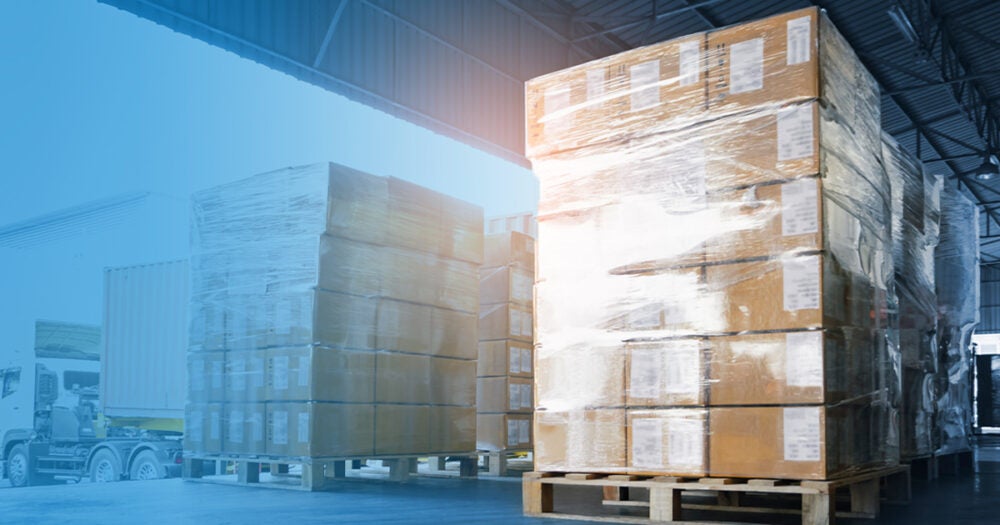Freight density is one of the most important calculations required for freight shipments. It helps shippers and carriers calculate how difficult and expensive it will be to transport certain less-than-truckload (LTL) shipments. And because freight density is needed to accurately calculate a shipment's freight class and avoid added fees, GlobalTranz has provided a Freight Density Calculator below to help you get it right the first time.
How to Calculate Freight Density
1. Measure the shipment.
Measure the shipment's entire length, width and height, including the crate, pallet and packaging. Standard pallets measure 48 inches long by 40 inches wide, but your pallet may differ so be sure to double check. If your shipment is irregularly shaped, measure from the farthest point on each end.
2. Enter each measurement into our Freight Density Calculator.
Enter each of these measurements into the calculator above to determine the shipment's size in cubic inches or feet. Be sure to measure accurately for best results.
3. Weigh the shipment.
Weigh the shipment, along with the crate, pallet and packaging. Be sure to use a calibrated, certified freight scale for an accurate weight. These scales may be floor scales, pallet scales or even hanging dial scales.
4. Enter the shipment's weight into the calculator.
Again, be sure to include a precise weight (in lbs.) for best results.
5. Find your freight density.
Now hit "calculate" and ta-da! You've found your shipment's freight density! Use this number to find your estimated freight class when booking your shipment.
Understanding Freight Density
Less-than-truckload shipping carriers use the density of your freight shipments to determine the freight's class and, subsequently, how much to charge to transport your shipments. That's why calculating your freight density and class correctly the first time is vital to securing the best rate for each of your shipments. If your calculations are incorrect, you could be overcharged or even fall victim to hefty reclassification fees.
Freight classification is determined by several factors including freight density, or total cubic feet divided by the shipment's weight in pounds. The lower the shipment's density, the higher the estimated freight class will be, and the more expensive it will be to ship.
So, why does accuracy matter when calculating freight density?
When creating a bill of lading (BOL), shippers must enter the shipment's dimensions and freight classification code. When the shipment is picked up by the carrier it will be reweighed, and the freight class will be confirmed. If the numbers provided aren't accurate, the carrier will adjust the BOL and charge the difference to the shipper. You can easily save time and avoid added costs and fees by starting with a Freight Density Calculator from a trusted 3PL like Globaltranz.
Use Freight Density to Determine Freight Class
Use this chart to get a general idea of your shipment's freight class after finding the shipment's density with our Freight Density Calculator. Keep in mind that this chart is based on density only. Other factors, like a shipment's stowability and ease of handling, may also impact freight class.
Freight Class Table
| Density based on weight (lbs.) | Estimated freight class |
| 50+ | 50 |
| 35–50 | 55 |
| 30–35 | 60 |
| 22.5–30 | 65 |
| 15–22.5 | 70 |
| 13.5–15 | 77.5 |
| 12–13.5 | 85 |
| 10.5–12 | 92.5 |
| 9–10.5 | 100 |
| 8–9 | 110 |
| 7–8 | 125 |
| 6–7 | 150 |
| 5–6 | 175 |
| 4–5 | 200 |
| 3–4 | 250 |
| 2–3 | 300 |
| 1–2 | 400 |
| < 1 | 500 |
Adjust Your Shipments to Save Money
Since a shipment with a lower freight class typically costs less to ship, you can actually save money by adjusting your shipment! For example, adding to a shipment's weight without increasing its dimensional size can move a shipment to a higher class, which would cost more to ship. But decreasing a shipment's height or width — like by using a smaller box — without increasing the weight can drop your shipment down a class, making it less expensive to ship.
Or, if you are shipping a large amount of the same commodity, it may even save you money to distribute the shipment into two or three parts with a lower class. You could even use a smaller container or pallet, or stack multiple shipments on the same pallet to lower your overall measurements! Talk to a GlobalTranz expert to learn more packing tips and save money on your LTL freight shipments.
Calculate Freight Class Correctly the First Time with GlobalTranz
Calculating a shipment's density and class take time and know-how that can take away from your bottom line. Plus, miscalculating these dimensions or figures can result in surprise fees on your invoice that you'll be responsible for covering. Take the hassle out of LTL freight shipping by partnering with a trusted 3PL like GlobalTranz for managed transportation services.
GlobalTranz has the expertise and resources shippers like you need to take your shipping to the next level, including a nationwide network of carriers and a dedicated support team here to back you through whatever the road throws your way. Ready to get started? Connect with a logistics expert today!

